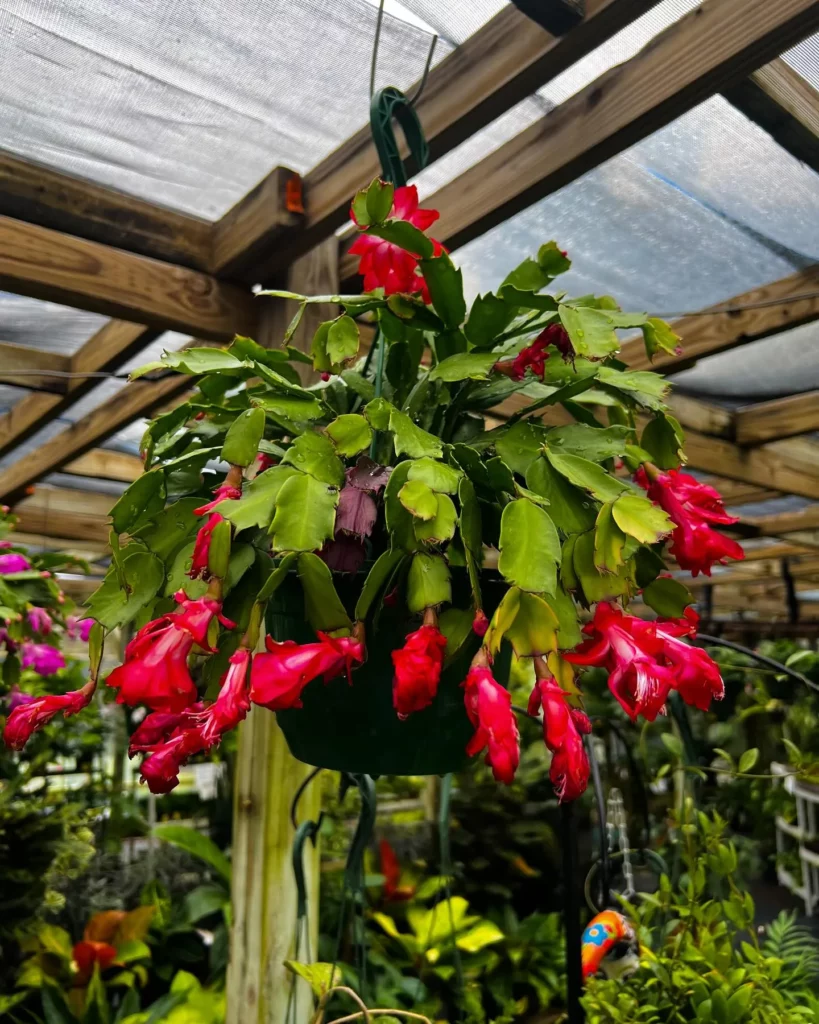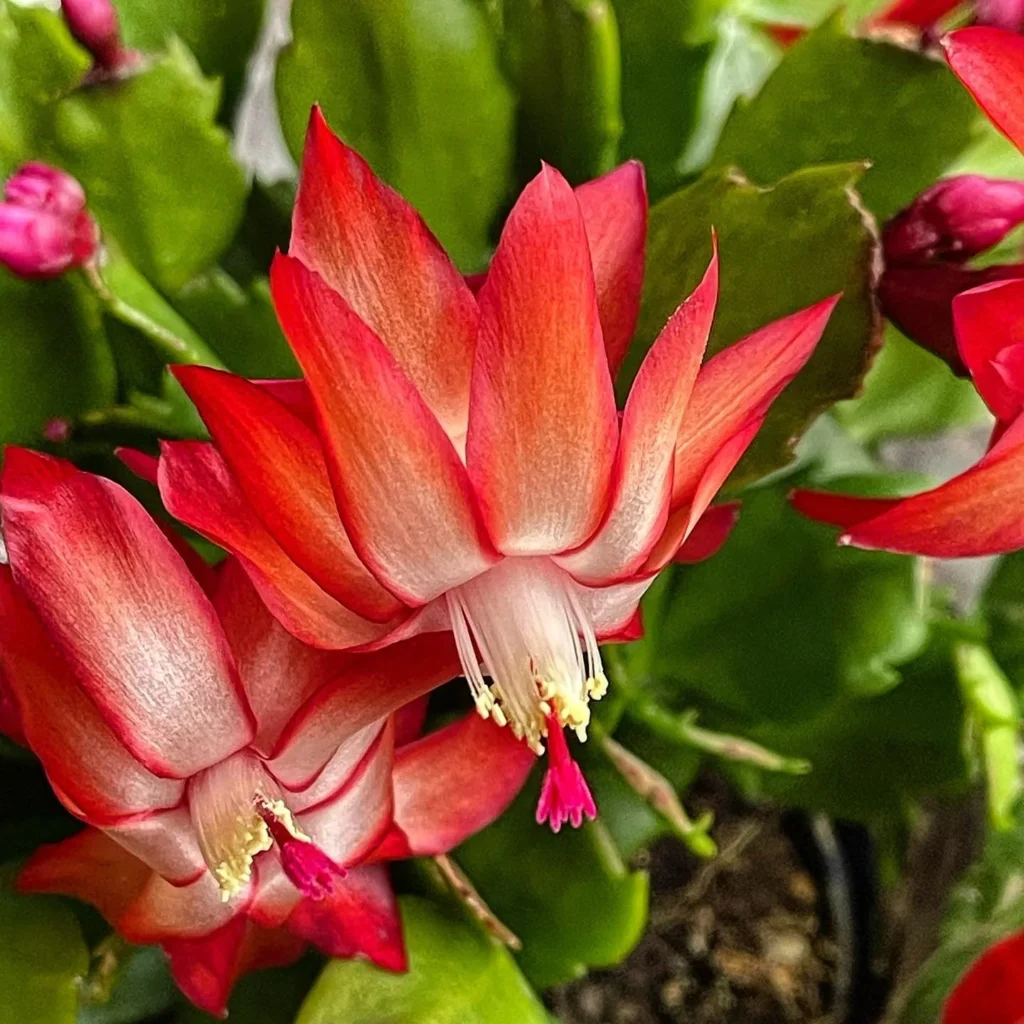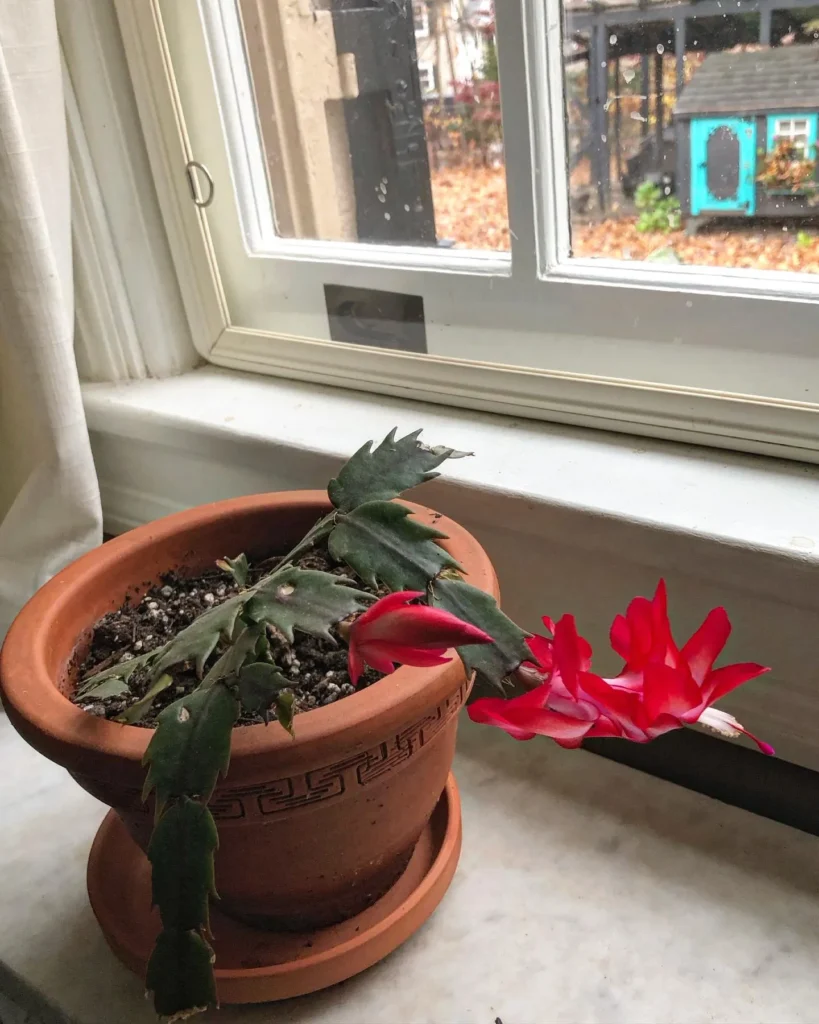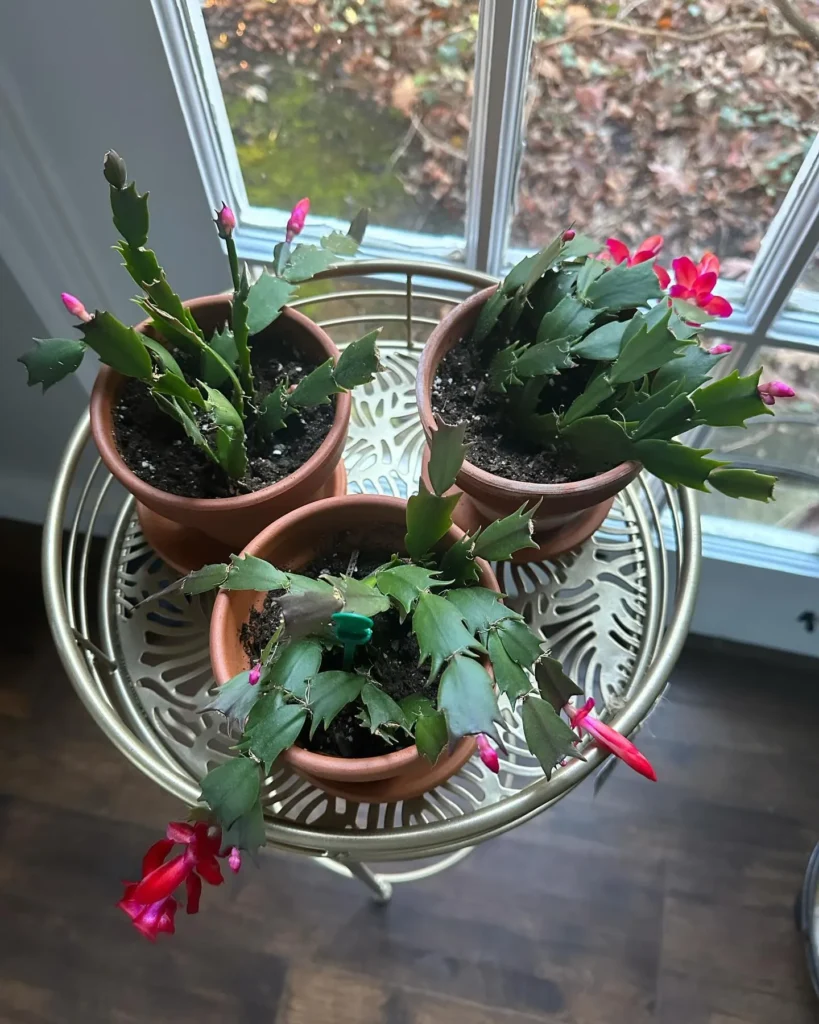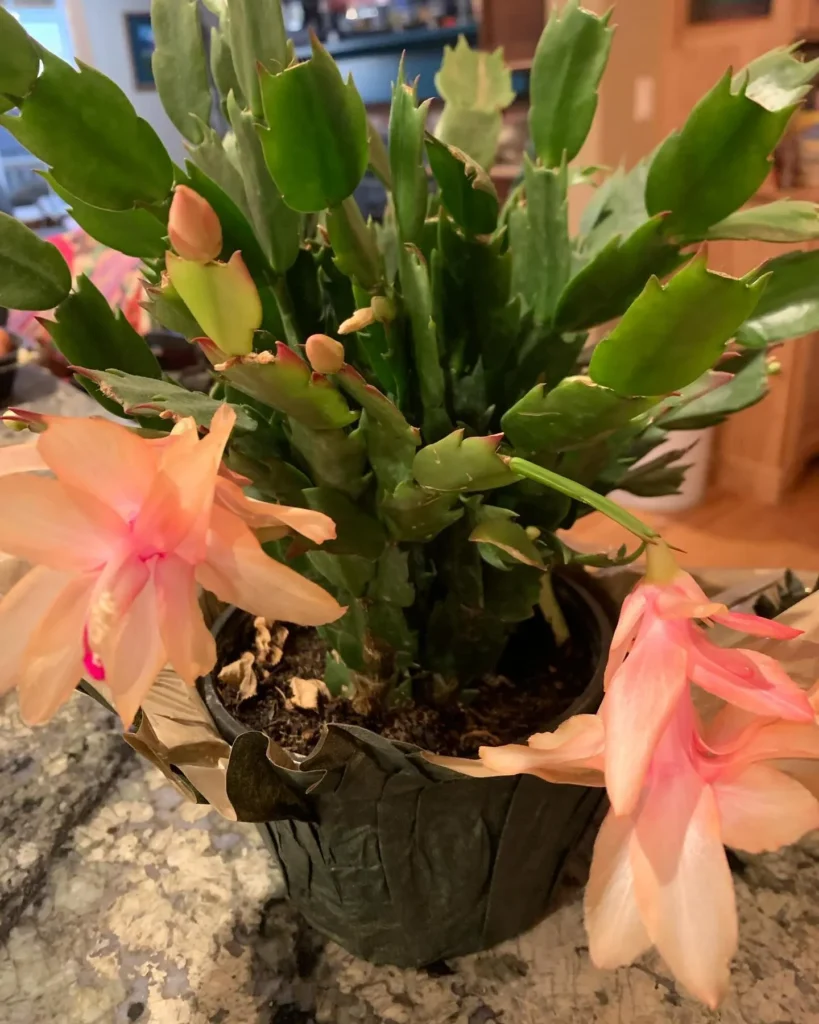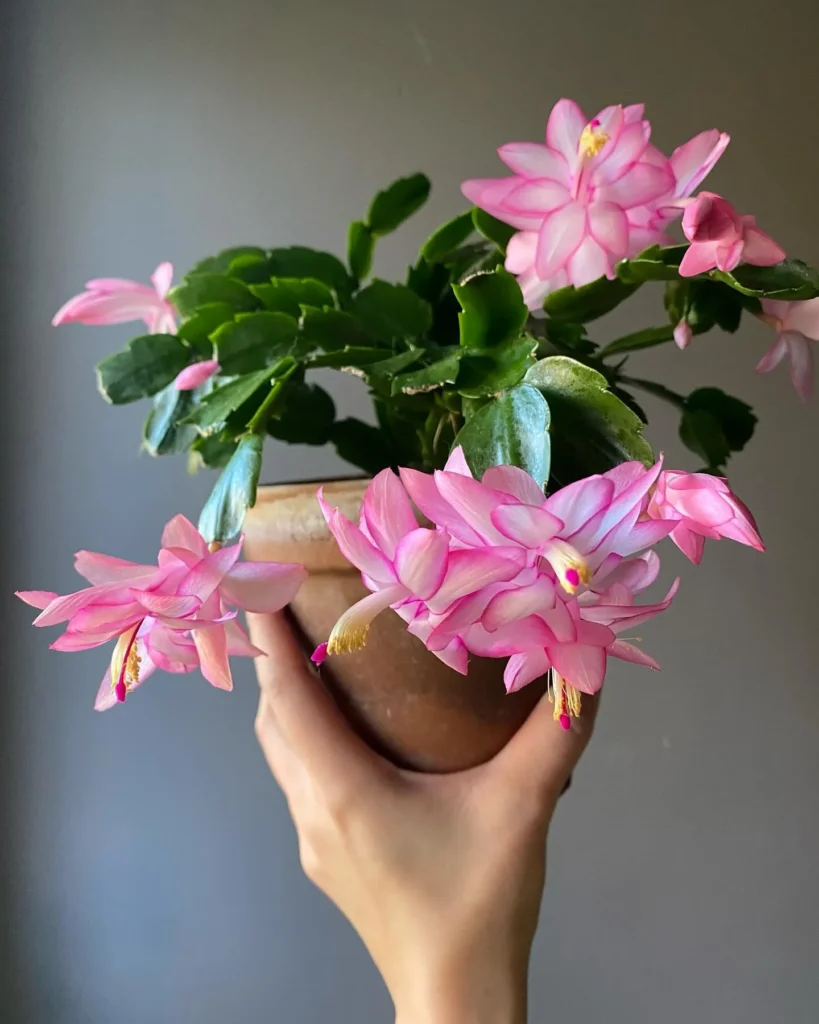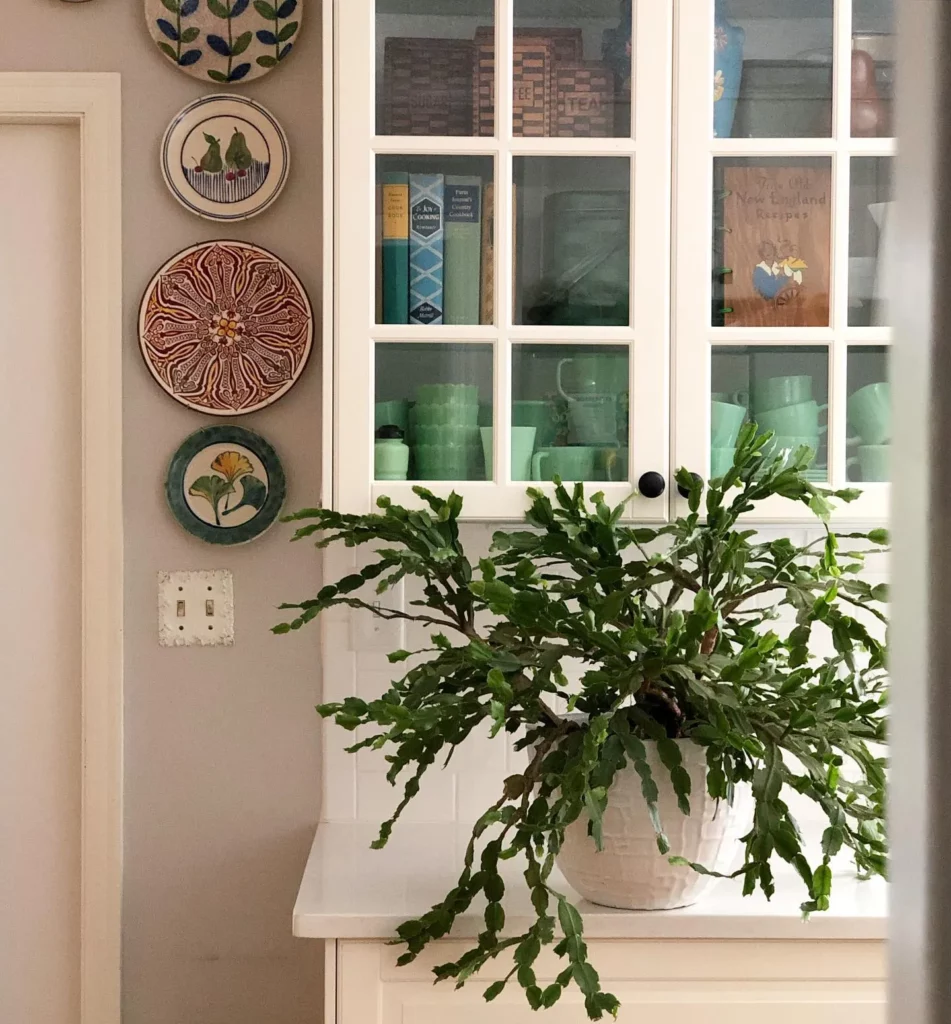Hello! Welcome to my Christmas Cactus Care Guide. If you’re a fan of houseplants and want to ensure your Christmas cactus thrives, you’ve come to the right place. In this guide, I’ll provide you with all the essential tips and tricks to keep your Christmas cactus healthy and blooming for years to come.
Appearance of Christmas Cactus
The Christmas cactus is a festive plant that adds a touch of beauty and cheer to any space. Native to the tropical rainforests, this vibrant houseplant features succulent-like leaves and produces tubular flowers in an array of colors like red, purple, orange, pink, and white.
Unlike its desert-dwelling cactus counterparts, the Christmas cactus thrives in a high humidity environment and can be found growing on tree branches in its natural habitat. Its unique appearance and long-lasting blooms make it a popular choice for holiday decor.
Light Requirements for Christmas Cactus

As an indoor plant, the Christmas cactus thrives in bright, indirect light. Placing it near an east-facing window is ideal, as it allows for moderate light and some direct sun exposure.
Avoid placing the plant in direct light during the summer months when the sun’s rays are stronger and can potentially burn the leaves.
Note: One way to determine if your Christmas cactus is receiving the right amount of light is by observing the color of its stems. If you notice that the stems are turning reddish-purple, it could be an indication that the plant is getting too much sun. In this case, it’s best to move the cactus to a location with less direct light.
- Christmas cacti prefer bright, indirect light
- An east-facing window provides moderate light and some direct sun
- Stems turning reddish-purple indicate too much sunlight
- Move the plant to a location with less direct light if needed
Watering Christmas Cactus
Here are some key considerations when it comes to watering your Christmas cactus:
1. Watering schedule:
- During the blooming period, the soil should be kept evenly moist. This means watering the plant when the top one-third of the soil feels dry to the touch.
- In early October, as the plant prepares to enter its blooming phase, you should reduce watering to promote bud formation.
- Once the buds begin to set, a weekly drink is recommended until flowering stops.
- In the rest of the winter, a twice-monthly watering schedule is sufficient to avoid over-watering.
2. Soil moisture:
- Christmas cacti prefer a well-draining soil that allows excess water to escape easily. It’s important to avoid waterlogged conditions, as this can lead to root rot. When watering, ensure that the water penetrates the soil deeply, but allow the excess water to drain out of the pot. Read our guide on the perfect Christmas Cactus soil mixture.
Fertilizing Christmas Cactus
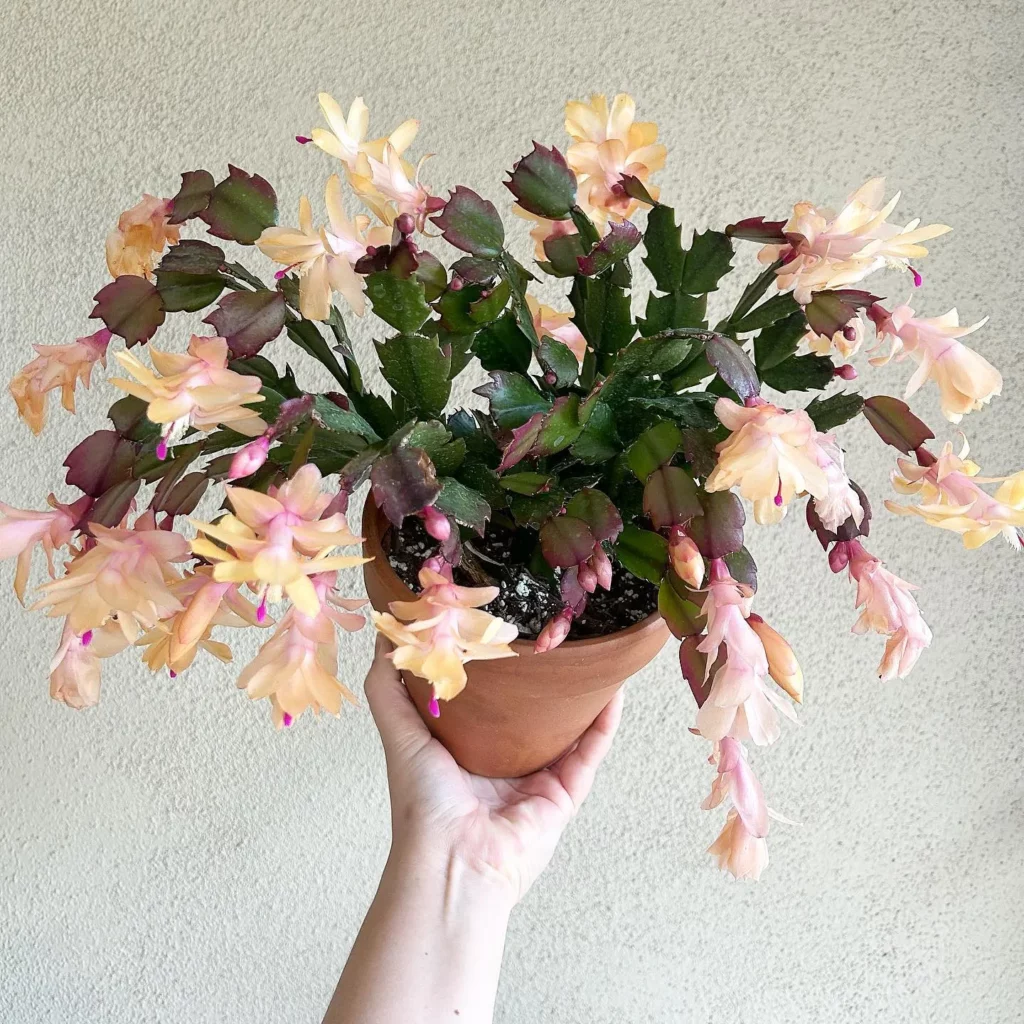
Instagram @hoyacakes
Fertilizing your Christmas cactus is an important part of its care routine. Providing the right nutrients will help promote healthy growth and vibrant blooms. When it comes to fertilizing, you’ll want to use a high-potassium fertilizer to support the plant’s flowering capabilities.
The best time to start fertilizing your Christmas cactus is when the buds begin to form. Apply a diluted, high-potassium fertilizer every two weeks during this active growth period. Be sure to follow the instructions on the fertilizer packaging and use half the recommended strength to avoid over-fertilization.
During the fall and winter months, when the plant is not actively growing, you can reduce the frequency of fertilization to once a month. This will provide the necessary nutrients for the plant’s overall health and help prepare it for the next blooming season.
Tips for Fertilizing Christmas Cactus:
- Use a high-potassium fertilizer to support blooming
- Start fertilizing when the buds begin to form
- Apply a diluted fertilizer every two weeks during active growth
- Follow the instructions on the fertilizer packaging and use half the recommended strength
- Reduce fertilization frequency to once a month during the fall and winter months
Guidelines for Potting a Christmas Cactus
Proper potting is crucial for the health and growth of a Christmas cactus. Here are some key guidelines to follow:
- Choose a planter with a drainage hole: When potting a Christmas cactus, it’s important to select a planter that has a drainage hole. This allows excess water to escape and prevents the roots from becoming waterlogged, which can lead to root rot.
- Opt for a slightly larger pot: The new pot should be slightly larger than the previous container, providing enough room for the roots to grow. This will help prevent the plant from becoming root-bound and ensure optimal growth.
- Trim excessive roots: Before repotting, trim any excessive roots that may have grown to ensure a compact and healthy root system. This will also help the plant adjust to its new pot more easily.
- Avoid garden soil: It’s best to avoid using soil from the garden when potting a Christmas cactus. Garden soil may contain spores or critters that can harm the plant. Instead, opt for a well-draining potting mix specifically formulated for cacti and succulents.
Repotting Tips:
Timing is crucial when it comes to repotting a Christmas cactus. It’s recommended to wait a few days after watering before repotting to prevent the plant from being too soggy. Make sure to handle the plant with care to avoid damaging the delicate stems and leaves.
Propagation of Christmas Cactus

Instagram @detailsdiary
Propagating a Christmas cactus is a rewarding way to expand your plant collection or share this beautiful houseplant with others. One of the most common methods of propagation is through stem cuttings. To start, choose a healthy segment of the Christmas cactus with at least two flat stem segments.
Next, fill a container with either perlite or coarse sand, ensuring that it has good drainage. Insert the stem cutting into the medium, making sure it is upright and stable. Place the container in a location with bright, indirect light.
Watering and Rooting
To help the stem cutting root successfully, it’s important to provide regular watering. Keep the medium evenly moist, but avoid overwatering as excessive moisture can lead to rot. Within six to eight weeks, you should begin to see roots forming on the stem cutting.
Care and Maintenance
Once the roots have developed, you can treat the newly rooted Christmas cactus as you would a mature plant. This includes providing the proper light, temperature, and humidity conditions. It’s important to note that newly propagated plants may take some time to reach maturity and start blooming.
Growth and Development of Christmas Cactus
When it comes to the growth and development of a Christmas cactus, there are a few key factors to consider. This indoor plant thrives in slightly cooler temperatures ranging from 60-70°F and prefers humidity levels of 50%-60%. It’s important to keep the cactus away from heating and cooling vents to avoid drying out. Additionally, these plants tend to do well when slightly pot-bound, so repotting is only necessary every three to four years.
Pruning is another essential aspect of Christmas cactus care. By trimming the plant, you can control its size and encourage branching, which in turn leads to more flowers. Regular care and providing proper conditions will support the Christmas cactus’s continuous growth and development, ensuring it remains a vibrant and healthy indoor plant for many years to come.
Care and Maintenance
- Christmas cacti prefer slightly cooler temperatures between 60-70°F.
- Maintain humidity levels of 50%-60% to create a favorable environment for the plant.
- Avoid placing the cactus near heating and cooling vents to prevent drying out.
- These plants thrive when slightly pot-bound, so repotting is only necessary every three to four years.
Care and Maintenance
- Control the size of the plant by trimming it as needed.
- Encourage branching by cutting back on select stems.
- Pruning helps promote more flowers and a fuller appearance.
Pests and Diseases of Christmas Cactus
While Christmas cacti are generally low-maintenance plants, they can be susceptible to pests and diseases. It’s important to keep an eye out for common pests like mealybugs, spider mites, and scale. These pesky critters can infest your Christmas cactus and cause damage if left untreated.
If you notice any signs of a pest infestation, such as sticky residue, webbing, or tiny crawling insects, it’s crucial to take immediate action. One effective method of control is to use insecticidal soap or neem oil. These natural remedies help to eliminate pests while being gentle on your plant.
Common Pests:
- Mealybugs: These small, cotton-like insects can be found on the stems and leaves of your Christmas cactus. They can weaken the plant and cause stunted growth if not dealt with promptly.
- Spider Mites: These tiny, spider-like pests are known for their ability to spin webs on the leaves of your Christmas cactus. They feed on plant sap, which can lead to wilting and discoloration.
- Scale: Scale insects are small, round or oval-shaped pests that attach themselves to the stems and leaves of your Christmas cactus. They can cause yellowing, leaf drop, and overall poor plant health.
In addition to pests, over-watering can also pose a threat to your Christmas cactus. Too much moisture can lead to root rot, resulting in a weakened and potentially dying plant. Ensure proper drainage and avoid letting your plant sit in excess water to prevent this issue.
Encouraging Blooming of Christmas Cactus
To ensure your Christmas cactus blooms beautifully, there are a few key factors to consider. These include temperature requirements and light cycles. By providing the right conditions, you can encourage optimal blooming and enjoy the vibrant colors of this festive plant.
Temperature Requirements
Christmas cacti thrive in cooler temperatures, which help stimulate the blooming process. It’s best to expose your plant to temperatures between 50-60°F during the blooming period. Avoid placing it near heating vents or sources of direct heat, as this can dry out the plant and hinder blooming.
Light Cycles
Light plays a crucial role in the blooming of Christmas cacti. To encourage blooming, it’s important to provide the right light cycle. During the six weeks leading up to the desired blooming time, the plant should have 10 hours of darkness and a total of 14 hours of darkness in a 24-hour period. This can be achieved by placing the plant in a dark room or covering it with a light-proof cloth during the required hours.
Consistency is Key
Consistency is essential when it comes to temperature and light conditions for blooming. Any fluctuations or interruptions in these factors can affect the blooming process. Maintain a regular schedule and ensure that the plant receives the same conditions every day for the duration of the blooming period.
FAQ
What is the appearance of a Christmas cactus?
Christmas cacti have succulent-like leaves and produce vibrant tubular flowers in a variety of colors like red, purple, orange, pink, and white.
What light requirements does a Christmas cactus have?
Christmas cacti prefer bright, indirect light and can tolerate some direct sunlight. An east-facing window is ideal for providing moderate light.
How often should I water my Christmas cactus?
Water your Christmas cactus when the top one-third of the soil feels dry to the touch. During blooming, keep the soil evenly moist, and reduce watering in early October. Resume weekly watering until flowering stops, and then switch to a twice-monthly schedule in the winter.
How should I fertilize my Christmas cactus?
Use a high-potassium fertilizer every two weeks during active growth to promote blooming. During fall and winter, fertilize monthly. Dilute the fertilizer to half strength and follow the instructions on the packaging.
How do I pot a Christmas cactus?
Choose a pot with a drainage hole to prevent root rot, and make sure it’s slightly larger than the previous container. Trim excessive roots, add organic matter, and wait a few days after watering before repotting. Avoid using garden soil as it may contain harmful elements.
How can I propagate a Christmas cactus?
Propagate a Christmas cactus through stem cuttings. Place the cuttings in perlite or coarse sand, provide bright light, and water regularly. The cuttings should root within six to eight weeks.
How does a Christmas cactus grow and develop?
Christmas cacti prefer slightly cooler temperatures and slightly pot-bound conditions. Repot only every three to four years, prune to control size and encourage branching, and provide regular care to support continuous growth and development.
What pests and diseases should I watch out for with a Christmas cactus?
Common pests include mealybugs, spider mites, and scale. Regular inspections and prompt treatment using insecticidal soap or neem oil can help control these pests. Over-watering can lead to root rot, so proper drainage is crucial.
How can I encourage blooming in my Christmas cactus?
Expose the Christmas cactus to temperatures between 50-60°F and a light cycle of 10 hours of darkness and 14 hours of total darkness for six weeks to stimulate blooming. Consistency in temperature and light conditions is important for optimal blooming.
What are some final tips for Christmas cactus care?
Remember to provide the right light, temperature, and humidity levels. Water the plant properly, fertilize regularly, and pot it in a container with a drainage hole. Prune, propagate, and address pests and diseases as needed for optimal plant health and long-lasting blooms.

